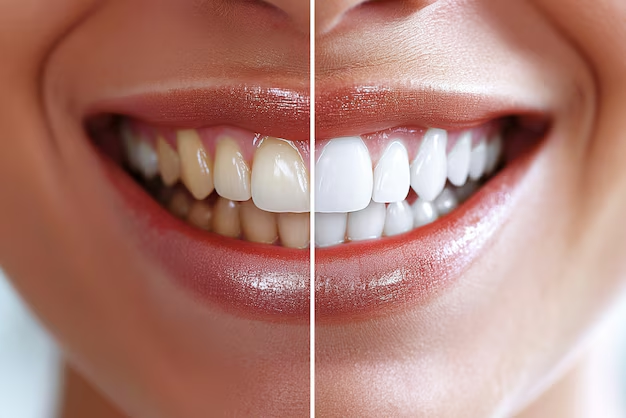
Teeth whitening has become one of the most popular ways to improve your smile. With so many options available, it’s easy to feel unsure about what works best. Some treatments promise fast results, while others focus on gradual whitening with fewer side effects. Before choosing a method, it helps to understand the benefits and limitations of each one.
If you’re considering teeth whitening in Cortlandt, NY, Hudson Valley Dental Medicine offers professional solutions designed to brighten your smile safely and effectively. This guide explores various options and helps you figure out which one matches your goals, habits, and schedule.
Why Teeth Lose Their Natural Color
Teeth stain over time due to food, drinks, age, and lifestyle habits. Coffee, tea, red wine, and dark berries can dull your enamel. Tobacco use also speeds up discoloration. Even if you brush regularly, some stains remain deep in the enamel and won’t go away with routine cleaning. Whitening targets those deep stains and removes years of discoloration.
Types of Teeth Whitening Options
Different whitening treatments serve different needs. The choice depends on how fast you want results, your sensitivity levels, and how much maintenance you’re willing to commit to.
In-Office Whitening
This professional treatment happens in the dental office. A whitening gel with high-concentration peroxide is applied to your teeth. The dentist might use a special light to activate the gel and speed up the process.
Why It Works
- Fast results, often in just one session
- Strongest whitening agents available
- Supervised by a dental professional
What to Consider
- Costs more than other methods
- May cause short-term sensitivity
- Works best for yellow-toned stains, not grey or brown
Patients who want fast, noticeable results often choose this option. If you have a wedding, event, or important meeting coming up, in-office whitening makes a strong impression in little time.
Over-the-Counter Whitening Strips
You can find whitening strips in most pharmacies. They stick to your teeth and contain a thin layer of peroxide gel.
Why It Works
- Affordable and easy to buy
- Suitable for mild staining
- Convenient to use at home
What to Consider
- May not reach all areas of the teeth
- Not designed for long-term results
- One-size-fits-all shape can cause uneven whitening
Whitening strips help if your teeth have light stains and you want a simple way to enhance your smile. They’re not a long-term fix but can offer a quick boost.
Whitening Toothpastes and Rinses
These products contain mild abrasives that scrub surface stains. Some also include small amounts of peroxide.
Why It Works
- Easy to add to your daily routine
- Inexpensive
- Helps maintain results after other whitening treatments
What to Consider
- Does not whiten deep stains
- Takes several weeks to notice any change
- Works better as a maintenance tool
Whitening toothpaste or rinse won’t create a dramatic difference, but they help extend the life of your professional treatment.
Natural Remedies
Some people try baking soda, charcoal, or oil pulling as natural whitening methods. These options often appear in DIY videos and blogs.
Why It Works
- Minimal cost
- Easy to try at home
What to Consider
- Lack of scientific support
- May damage enamel with overuse
- Slower and less predictable results
Natural remedies can be risky when used without guidance. Scrubbing your teeth with harsh substances can wear down enamel, which leads to sensitivity or damage. Always check with a dentist before trying these methods.
How to Choose the Best Whitening Option
You don’t need to guess which method suits you. The right whitening plan depends on several factors, and your dentist can guide you through the decision.
Consider Your Goals
Do you want a brighter smile for a specific event, or are you looking for long-term whitening? Fast-track options like in-office treatment work well for quick results, while take-home kits offer slow, steady progress.
Think About Your Habits
If you drink coffee daily or smoke, you might need stronger whitening and more upkeep. Regular touch-ups will help keep your smile white longer.
Know Your Sensitivity Level
Some people feel tooth pain or gum irritation during whitening. If you have a history of sensitivity, your dentist may suggest a lower-strength option that works more gently over time.
Budget Matters
Over-the-counter products are cheaper upfront, but they offer limited results. Professional whitening lasts longer and provides a better return on your investment. Hudson Valley Dental Medicine offers solutions at various price points, so you can choose what fits your situation.
How Hudson Valley Dental Medicine Can Help
Hudson Valley Dental Medicine provides in-office whitening that deliver noticeable results without harming your enamel. Dr. Francis Turturro and the team use safe and effective materials to brighten your smile while addressing sensitivity and tooth health.
The office also offers follow-up care and guidance on how to maintain your results. Contact us today to set an appointment and explore whitening options and read what other patients have to say. You can also call the office directly to ask questions or set up a time to talk in person.
Schedule Your Appointment Today
If you’re ready for a whiter smile, Hudson Valley Dental Medicine can help you find the right solution. Book your appointment to speak with Dr. Turturro about your goals and learn what method fits your needs. Contact us online or over the phone to get started.
Final Thoughts
Teeth whitening offers a boost in confidence and appearance when done correctly. Several methods exist, but not all work the same for every smile. Whether you choose in-office treatment or a take-home kit, working with a trusted dental provider gives you better, safer results. Hudson Valley Dental Medicine helps patients in Cortlandt, NY, choose whitening options that deliver real change.
FAQs
How long do whitening results last?
It depends on your diet, habits, and oral hygiene. Most results last six months to two years with proper care.
Does whitening damage teeth?
When done under professional guidance, whitening does not harm your enamel.
Can I whiten crowns or fillings?
No. Whitening products only work on natural teeth. Your dentist can recommend other ways to improve the look of crowns or fillings.
How soon can I eat or drink after whitening?
Wait at least one hour. Avoid dark foods and drinks for the first 24 hours to protect your results.
Can I do whitening if I have sensitive teeth?
Yes. Your dentist can use low-sensitivity options and adjust the process to keep you comfortable.


